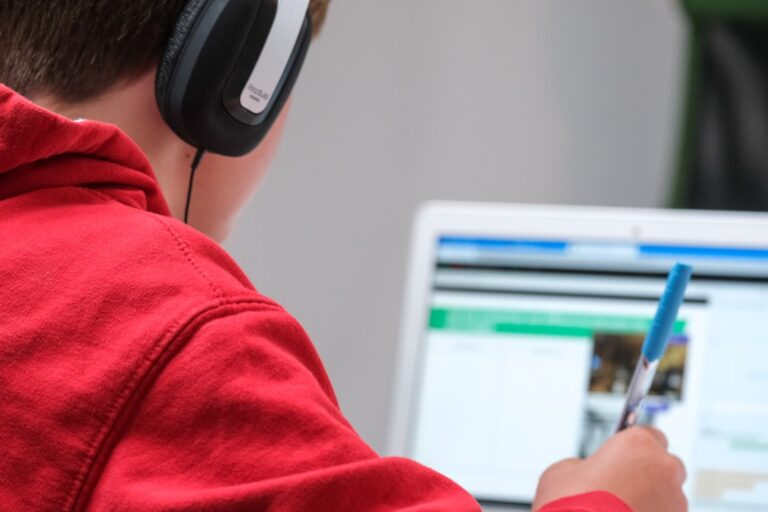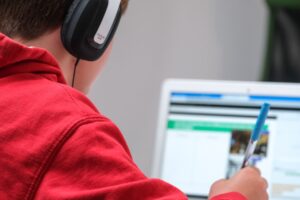In an increasingly digital world, the importance of coding skills cannot be overstated. As technology continues to evolve, the demand for individuals who can understand and manipulate code is growing exponentially. However, the traditional approach to teaching coding often relies heavily on computers and software, which can create barriers for some learners.
Unplugged coding emerges as a powerful alternative, allowing educators to introduce fundamental programming concepts without the need for electronic devices. This method emphasizes hands-on learning and fosters critical thinking, problem-solving, and collaboration among students. Unplugged coding activities can take many forms, from simple games and puzzles to more complex challenges that require logical reasoning and creativity.
By engaging students in these activities, educators can demystify coding and make it accessible to all learners, regardless of their background or prior experience with technology. This approach not only enhances students’ understanding of coding principles but also encourages them to think like programmers, developing skills that are essential in today’s tech-driven society.
The Benefits of Teaching Kids Coding Without Computers
Teaching coding without computers offers a myriad of benefits that extend beyond the realm of programming itself. One of the most significant advantages is the opportunity for students to engage in tactile, kinesthetic learning experiences. By using physical objects, such as cards or blocks, to represent coding concepts, children can visualize and manipulate abstract ideas in a concrete way.
This hands-on approach caters to various learning styles and helps solidify understanding by allowing students to physically enact the processes they are learning about. Moreover, unplugged coding fosters collaboration and communication among students. Many unplugged activities are designed for group participation, encouraging learners to work together to solve problems and share ideas.
This collaborative environment not only enhances social skills but also mirrors real-world programming scenarios where teamwork is often essential. Additionally, unplugged coding can help reduce the intimidation factor associated with technology, making it easier for students who may feel overwhelmed by screens and software to engage with coding concepts in a more relaxed setting.
How to Teach Unplugged Coding to Kids

Teaching unplugged coding effectively requires a thoughtful approach that considers the age and developmental stage of the learners involved. Educators should begin by introducing basic programming concepts such as algorithms, sequencing, and loops through relatable examples. For instance, teachers can explain algorithms by comparing them to everyday tasks like following a recipe or giving directions.
This contextualization helps students grasp the relevance of coding in their daily lives. Once foundational concepts are established, educators can employ various strategies to facilitate unplugged coding activities. One effective method is to use storytelling as a vehicle for teaching.
By creating narratives that incorporate coding challenges, teachers can engage students’ imaginations while reinforcing key concepts. For example, a story about a robot navigating a maze can lead to discussions about algorithms and problem-solving strategies. Additionally, educators should encourage students to reflect on their learning experiences by discussing what worked well and what could be improved during activities.
This reflection not only deepens understanding but also promotes a growth mindset.
Unplugged Coding Activities for Different Age Groups
| Age Group | Activity Type | Duration | Learning Outcome |
|---|---|---|---|
| 3-5 years | Storytelling with Coding Cards | 30 minutes | Introduction to sequencing and logical thinking |
| 6-8 years | Unplugged Coding Board Games | 45 minutes | Understanding algorithms and problem-solving |
| 9-12 years | Robotics and Coding Challenges | 60 minutes | Developing computational thinking and teamwork |
Unplugged coding activities can be tailored to suit various age groups, ensuring that all learners can participate meaningfully. For younger children, activities that involve simple commands and sequencing are particularly effective. One popular activity is “Robot Commands,” where students take turns acting as robots while their peers give them verbal instructions to navigate an obstacle course.
This activity introduces basic programming concepts while promoting physical movement and engagement. As students grow older and their cognitive abilities develop, more complex activities can be introduced. For example, middle school students might enjoy a “Coding with Cards” game where they use cards representing different programming commands to create algorithms that solve specific challenges.
This activity not only reinforces sequencing and logic but also encourages critical thinking as students analyze the efficiency of their algorithms. High school students can delve into more advanced unplugged activities such as creating flowcharts or designing their own board games that incorporate coding principles. These activities challenge students to apply their knowledge creatively while fostering collaboration and strategic thinking.
Integrating Unplugged Coding into the Classroom
Integrating unplugged coding into the classroom requires careful planning and alignment with existing curricula. Educators can begin by identifying opportunities within their current lesson plans where unplugged coding concepts can be seamlessly incorporated. For instance, math lessons on patterns and sequences can be enhanced by introducing unplugged coding activities that emphasize algorithmic thinking.
By connecting coding principles to subjects like math, science, and language arts, teachers can create a more interdisciplinary learning experience. Professional development for educators is also crucial in successfully integrating unplugged coding into the classroom. Teachers should be provided with training and resources that equip them with the knowledge and skills necessary to facilitate these activities effectively.
Collaboration among educators can further enhance this integration; teachers can share successful strategies and resources while brainstorming new ways to incorporate unplugged coding into their classrooms. By fostering a culture of collaboration and continuous learning among educators, schools can create an environment where unplugged coding thrives.
Resources for Unplugged Coding

A wealth of resources is available for educators looking to implement unplugged coding in their classrooms. Numerous organizations and websites offer free materials, lesson plans, and activity guides specifically designed for unplugged coding instruction. For example, Code.org provides a variety of unplugged activities that cater to different age groups and skill levels, making it easy for teachers to find suitable resources for their students.
Books dedicated to unplugged coding are also valuable assets for educators seeking inspiration and guidance. Titles such as “Computer Science Unplugged” by Tim Bell, Ian Witten, and Jenny Bennett offer comprehensive insights into various unplugged activities along with detailed explanations of the underlying concepts. Additionally, online communities and forums allow educators to connect with one another, share experiences, and exchange ideas about best practices in teaching unplugged coding.
Challenges and Solutions for Teaching Unplugged Coding
While teaching unplugged coding presents numerous benefits, it is not without its challenges. One common obstacle is the misconception that coding must always involve computers or technology. Some educators may feel hesitant to embrace unplugged methods due to a lack of familiarity or confidence in teaching these concepts without digital tools.
To address this challenge, professional development opportunities focused on unplugged coding can help build educators’ confidence and competence in this area. Another challenge lies in ensuring that unplugged activities remain engaging and relevant for students. As learners become more accustomed to technology-driven education, they may initially resist unplugged approaches due to perceived boredom or lack of interest.
To combat this issue, educators should strive to create dynamic and interactive activities that resonate with students’ interests and experiences. Incorporating elements of gamification or real-world problem-solving scenarios can enhance engagement while reinforcing key coding concepts.
The Future of Unplugged Coding
The future of unplugged coding looks promising as educators increasingly recognize its value in fostering foundational programming skills among learners of all ages. As technology continues to advance at an unprecedented pace, the need for individuals who can think critically about code will only grow stronger. Unplugged coding serves as an essential bridge that connects students with these vital skills while promoting creativity, collaboration, and problem-solving abilities.
As more schools adopt unplugged coding practices, it is likely that we will see a shift in how programming is taught across educational settings. The integration of unplugged methods alongside traditional computer-based instruction will create a more holistic approach to teaching coding that caters to diverse learning styles and preferences. Ultimately, the continued exploration of unplugged coding will empower future generations with the skills they need to thrive in an increasingly digital world while fostering a love for learning that transcends screens and devices.
FAQs
What is coding?
Coding is the process of using a programming language to create instructions for a computer to follow. It involves writing and organizing code to produce a specific outcome, such as creating a website, app, or game.
Why is it important to teach coding to kids?
Teaching coding to kids helps develop their problem-solving skills, logical thinking, and creativity. It also prepares them for future careers in technology and helps them understand the digital world around them.
How can coding be taught to kids without using a computer?
Coding can be taught to kids without using a computer by using hands-on activities, such as coding games, puzzles, and unplugged coding activities. These activities help kids understand coding concepts without needing a computer.
What are some examples of unplugged coding activities for kids?
Unplugged coding activities for kids include using coding cards, creating a human robot, and playing coding board games. These activities teach kids about sequencing, algorithms, and problem-solving without needing a computer.
What are the benefits of teaching coding to kids without using a computer?
Teaching coding to kids without using a computer helps them understand fundamental coding concepts, improves their critical thinking skills, and allows them to learn in a hands-on and interactive way. It also makes coding more accessible to kids who may not have regular access to technology.


















